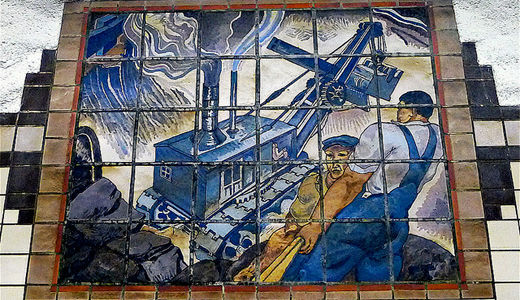
On April 8, 1935, with the nation in the depths of the Depression, Congress voted to approve the Works Progress Administration (WPA), a central part of President Franklin D. Roosevelt’s “New Deal.”
In his first inaugural address, on March 4, 1933, responding to mounting demands for relief and work, Roosevelt put forward his New Deal for the American people – an expansion of the federal government as an instrument of employment opportunity, economic recovery and growth, and social well-being.
The WPA was established under the Emergency Relief Appropriation Act, as a means of creating meaningful public works jobs for the nation’s millions of unemployed. Under the direction of Harry Hopkins, the WPA employed more than 8.5 million people on 1.4 million public projects before it was disbanded in 1943. The WPA was a national program that operated its own projects in cooperation with state and local governments, which provided 10-30 percent of the costs. Hourly wages were typically set to the prevailing wages in each area.
The WPA included vast public building projects like the construction of highways, bridges, dams, airports, parks, public libraries, and public recreation facilities. In its eight-year run, it built 325 firehouses across the country, renovated 2,384 of them, and built 20,000 miles of water mains. The WPA also included archeological excavations of significant sites, the Historic American Buildings Survey, and other historic preservation projects.
Among the WPA’s most famous programs are those that put writers, artists, musicians, actors and directors to work: the Federal Art Project, the Federal Theatre Project, and the Federal Writers Project. Among their products are the now-legendary public murals that still grace post offices and other public spaces around the country, as well as regional guidebooks that have become valuable cultural and historic sources. The WPA programs in the arts led to the creation of the National Foundation for the Arts and the National Endowment for the Humanities.
The WPA also provided federal funding for students, who were given work under the National Youth Administration. At its height, the WPA provided employment for a quarter of the nation’s unemployed. Its programs were extremely popular, and contributed significantly to Roosevelt’s landslide reelection in 1936.
Photo: WPA Mural, Newark City Subway, Washington Street Station, Newark, N.J. Michael Padwee CC 2.0. This is one of eight different WPA murals depicting life on the Morris Canal. The tile murals were designed by Domenico Mortellito (1906-1996). See more information and photos here.












Comments